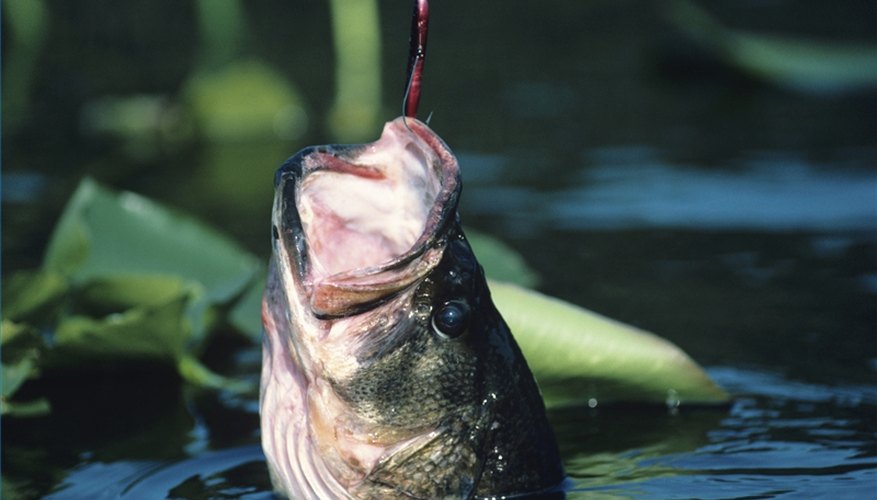
Largemouth bass, Micropterus salmoides, are found in the United States, northern Mexico and in Canada. Olive green in color, largemouth bass live in shallow waters, swimming in the vegetation near the banks of lakes and reservoirs. Environmental changes -- temperature changes and drop-offs in food sources -- are factors in how a bass adapts.
Diet
Instead of relying on one type of prey, the largemouth bass has adapted to a diverse diet, which is especially helpful during the winter months and when the water is murky. You might call bass opportunistic because they will eat what they can find based on their current habitat. They begin with a diet of plankton. Fingerlings, or young bass, eat miniscule insects found near water. Once larger, they feed on fish, crustaceans, frogs and other amphibians.
Searching for Food
Largemouth bass prefer clear water as they rely on their sight for finding food. But the fish adapts by using its sense of sound and vibrations to find prey when the water is dark. Their lateral line, a sense organ located on the right and left side running from the base of the tail to the gills, kicks in to help them detect any sound and motion in the water around them.
Water Temperatures
A largemouth bass will rarely swim lower than 20 feet from the surface and will typically be found in 2 to 12 feet of water. In the winter, the fish heads to the shallow bottom to keep warm. In the spring, bass will head to the warmest part of the body of water -- typically the northwest corner near the shore. Bass have learned to live with lower levels of oxygen by restricting their movement in warmer water, where less oxygen is found. When the water temperature starts to drop in the fall, activity levels increase as bass prepare for the winter.
Body Shape
The largemouth bass is a roving predator, meaning it is in constant motion searching for food. With bodies that have more length than width, they use their speed to catch prey. Their forked tail helps them maneuver through the water quickly along with two dorsal fins. Their wider jaws, especially the upper, have adapted for eating more filling large crustaceans and fish.



